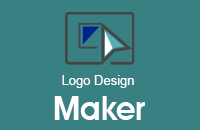Double Outsourcing - A Double-Edged Sword?
June 13th, 2010
Disruptive Business Models and Negative Incentives
Outsourcing has become a growing trend in a variety of industries. As firms become more specialized in the products and services they offer, the need to outsource certain tasks has become apparent. A small business will probably find it more cost effective to hire a tax accountant than do it themselves. They also will probably want to hire an artist to create their logo design and brand identity. This has all become intuitive to companies that need to focus more and more on their core business. But what happens when the service company out-sources its own contracts?
This model of 'double outsourcing' is relatively new in the business world. It leaves the service company with virtually no overhead, only control over marketing, advertising and administration. In the logo design realm, this means that designers from all over the world will be contracted to work on any given project at any given time, working through a centralized network to submit their work. This free-market mechanism allows designers to bid freely on jobs, set their own hours and work as they please.
The model is supposed to make it so that only designers interested in a project will bid on a particular job. This has the intention of encouraging interesting designs. However, it's really a roll of the dice in terms of the quality of service a client receives. Who exactly are these designers? What type of qualifications do they have? In this type of situation, nothing can be certain. Often times, a logo design may look great initially, but once you sit down and start to work and manipulate its elements, design flaws will become apparent, revealing the shortcomings of the designer. A well-designed logo should be functional, easy to use in a variety of situations, and be easy to change and modify. Not every designer is able to accomplish this.
Another problem lies in the kinds of incentives the competitive design model creates. The structure is set up so that every artist competes against an array of other logo designers, creating multiple concepts for a single project. If a design is chosen, the artist receives a bonus commission. This business model has the intention of encouraging the very best from its designers. However, it can also have the effect of encouraging theft or excessive borrowing of existing logo design concepts, as these artists are often put under severe time and budget constraints.
As a more traditional form of outsourcing, take LogoBee.com for instance. LogoBee's designers are all in-house, meaning they work as a team to ensure a project is completed. There are advantages and disadvantages to this approach. On the downside, the company is more susceptible to workload fluctuations. Although it may not be as efficient business-wise, it ensures that a minimum standard of quality is delivered on every logo design project. It also helps take advantage of the specific talents of the designers, using a projects coordinator to handle the distribution of tasks.
Having a symbiotic relationship with fellow designers helps to remove the competitive element from the design process. A team of artists are more likely collaborate on a project, which puts them in a better position to create an original identity, rather than competing to submit a winning design.
From a distance, the double-outsourcing business model looks appealing, cost-effective and efficient. However, until 'double-outsourcing' can iron out the negative incentives that arise in the logo design field, you may want to stick to a company that employs in-house designers.




